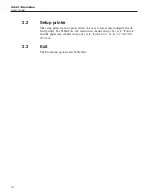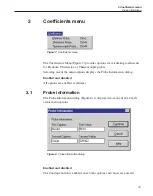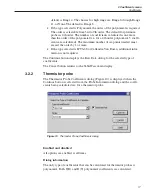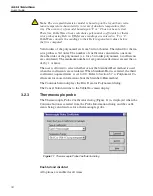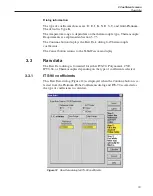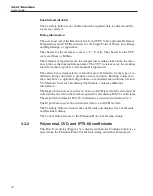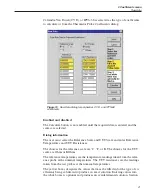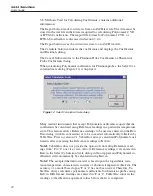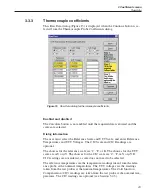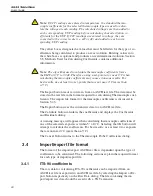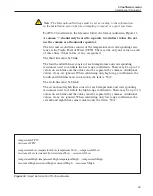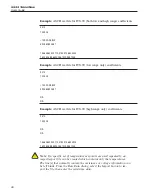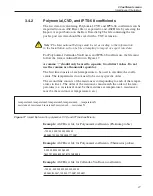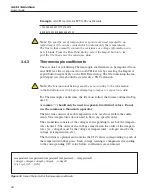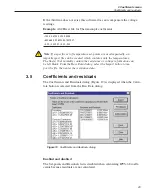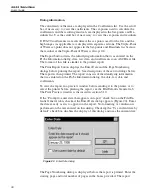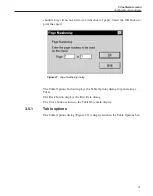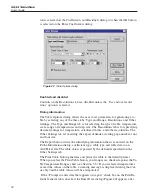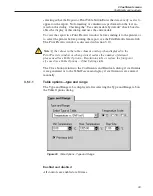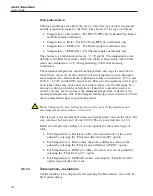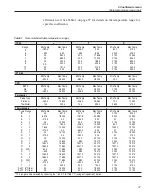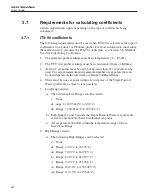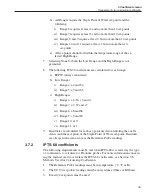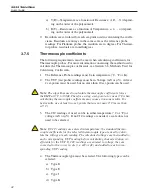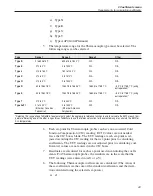
Example:
ASCII text file for IPTS-68 coefficients.
–100.00,0.000,232.0110,419.4314
59.2564,100.025,188.6534,256.1023
Note:
If a specific set of temperature set-points are used repeatedly, an
import/export file can be created which contains only the temperatures.
The line(s) that normally contain the resistance or voltage information can
be left blank. From the Raw Data dialog, select the Import button to im-
port the file, then enter the resistance data.
3.4.3
Thermocouple coefficients
The raw data for calculating Thermocouple coefficients can be imported from
an ASCII text file or exported to an ASCII text file by selecting the Import or
export button respectively on the Raw Data dialog. The file containing the im-
port/export raw data should be saved with a .TXT extension.
Note:
The International Settings must be set according to the information
in the Installation section before attempting to import or export raw data.
For Thermocouple coefficients, the file must follow the format outlined in Fig-
ure 18.
A comma “,” should only be used to separate two distinct values. Do not
use the comma as a thousands separator.
The first line consists of each temperature to be used to calculate the coeffi-
cients. The temperatures do not need to be in any specific order.
The second line consists of the voltages corresponding to each of the tempera-
tures in line 1. The order of the voltages must match the order of the tempera-
tures (i.e. voltage1 must be the voltage at temperature1, voltage4 must be the
voltage at temperature4, etc.)
The third line is optional and contains the CJC values corresponding to each of
the temperature/voltage pairs. Each voltage reading is compensated according
to the corresponding CJC value before coefficients are calculated.
9933 TableWare
User’s Guide
28
temperature1,temperature2,temperature3,temperature4,...,temperatureN
voltage1,voltage2,voltage3,voltage4,...,voltageN
[cjc1,cjc2,cjc3,...,cjcN]
Figure 18
Import file format for thermocouple coefficients

